Can people with high blood sugar eat papaya?
Can people with high blood sugar eat papaya?
Papaya is the Rosaceae papaya plant stick peduncle begonia fruit, rich in vitamins, minerals, etc., but also contains polysaccharides, proteins, papaya enzymes, and organic acids, has a high nutritional and medicinal value, in Guangdong, Hainan and other places, papaya is also known as the"The fruit of longevity."[1], which is popular for its sweet flavor and soft texture.
Existing users ask, can people with high blood sugar eat papaya?
Talking Food is here to answer your question: People with high blood sugar can eat papaya when their blood sugar control is stable, just don't eat too much. Want to know why? Read on!
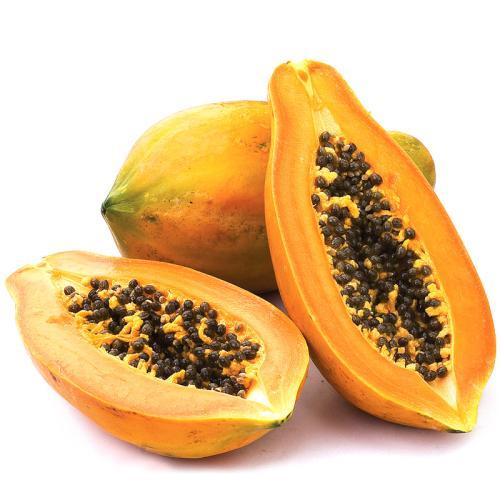
[How to choose food for people with high blood sugar]
A: Combined reference GI and GL values.
It is well known that people with high blood glucose should strictly limit the intake of sugar, and dietary control is crucial for them. Next, Talking Food will introduce two reference indexes for people with high blood glucose to choose food.
1. Glycemic Index (GI)
refers to human consumption of food containing50 gramsHow much of a glycemic response is elicited after a carbohydrate food can be used to measure the effect of carbohydrates in food on blood glucose concentrations.
Usually foods with a GI value of less than 55 are called low GI foods, 55 to 70 are called medium GI foods, and 70 or more are called high GI foods [2], with larger values indicating a greater tendency to raise blood glucose.
2. Glycemic load (GL)
The glycemic index, multiplied by the value obtained by multiplying the carbohydrate content of the food consumed, is an indicator for assessing the glycemic effect of a diet in relation to the quantity and quality of carbohydrates in the food [3].
A GL value of no more than 10 is considered a low load level, 11 to 19 is a medium load level, and greater than or equal to 20 is a high load level, with larger values indicating a greater tendency to elevate blood glucose.
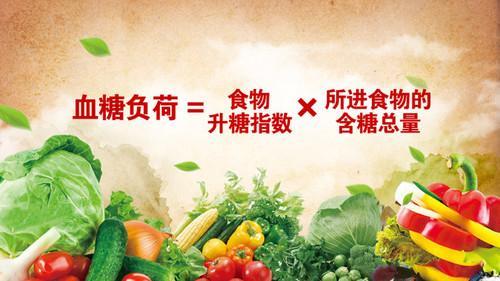
Therefore.People with high blood sugar should try to choose low GI foods or low GL foods.
Of course, this does not mean that foods with a low GI value can be eaten more often, nor does it mean that foods with a high GI value must not be eaten, but also refer to the GL value in a comprehensive manner.
For example, watermelon has a GI of72%It is a high GI food, but200 gramsWatermelon contains only11 gramsSo.200 gramsThe GL value of watermelon is11×72%=7.92that are still low GL foods.This suggests that consuming 200 grams of watermelon when blood sugar control is stable is not a problem.
As we can see, the GL value can reflect the impact of different food intake on blood glucose, which is more direct and clearer than the GI value. Sugar lovers who are in a position to do so can also calculate the GL value according to the GI value and intake of food, and make corresponding adjustments to their dietary structure.
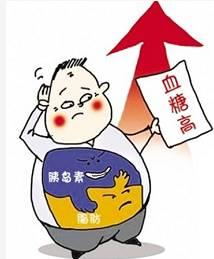
[Can people with high blood sugar eat papaya?
A: You can eat it, just don't eat too much.
Once it's clear how people with high blood sugar should choose their food, let's go back to the GI and GL values of papaya.
The magnitude of the GI value is influenced by a number of factors, and the currently recognized GI values used for papaya are25% to 30%In combination with the above analysis, it can be seen that papaya is a low GI food. The information shows that every100 gramsThe sugar content of papaya is8 to 10 gramsconjunction used express contrast with a previous sentence or clause200 gramsThe sugar content of papaya has16-20 grams[4].
The food is here and is calculated at the maximum value.200 gramsGL values for watermelon:30%×20=6Description200 gramsPapaya is still at a low load level.
Therefore.When blood glucose control is stable, consuming 200 grams of papaya has no significant effect on blood glucose and can be safely consumed.
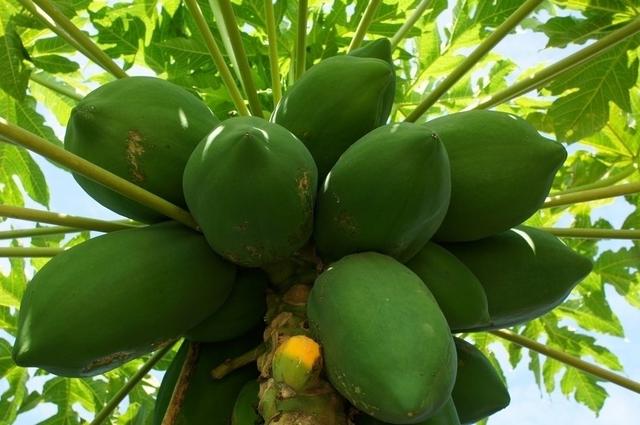
I don't know if you readers have noticed, but Word Food adds a premise before jumping to conclusions - theStable blood glucose controlIt's very important.
Blood sugar fluctuates greatly or medication control is ineffective when it is best not to eat, when the body is in a very period of time, any food containing sugar should be avoided as much as possible.However, during periods of blood glucose stabilization, papaya is fine in moderation as a nutritious fruit with a low glycemic load.
bibliography
[1] FENG Aiguo,LI Chunyan. Nutritional composition and efficacy value of papaya[J]. China Food and Nutrition, 2008,(05):54-55.
[2] RAN Mingyu,AN Yanjun,BIAN Donglin,XING Qingrong. Glycemic index and its application[J]. Southwest Military Medicine,2011,13(05):902-903.
[3] JIN Jinghong, LU Tanyun, WANG Junxiu, BAI Jiaojiao, GAO Jian. Application of glycemic index and glycemic load in diabetes diet education[J]. Shanghai Nursing,2008,(03):72-76.
[4] Rui Wang. Nutritional and health care functions of papaya and its product development[J]. Food Research and Development, 2006,(01):125-127.
Author: Huang Xiumin Zhao Lichao
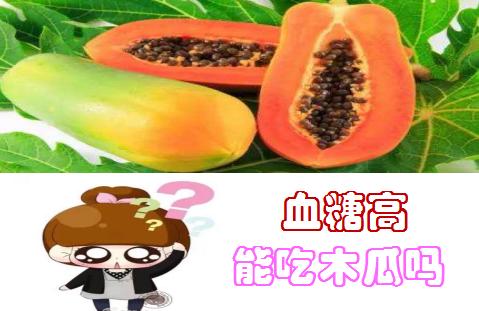
Core Tip:
1, high blood sugar people choose fruits should not only look at the GI, but also look at the GL, although the papaya in the fruit GI is higher, but its sugar content is not high, the calorie is not high, about 29 kcal/100g, can be eaten in moderation.
2. The sugar content of fruits is not accurate by taste alone, and hawthorn has much higher sugar content than watermelon.
3, diabetic patients do not give up the fruit, the type and color should be varied, you can eat 200g per day.
I am a retired internist who understands nutrition, and I am often asked questions about diabetes in my life and on the internet, such as: can I eat fruits so sweet I have high blood sugar? Can I drink porridge for diabetes? Can pumpkin lower blood sugar? And so on. About high blood sugar people can eat papaya? The answer is: you can eat, but to control the intake. In fact, people with high blood sugar or diabetic diet should not be obsessed with whether the food has a sweet flavor, but should pay attention to the speed of the rise in blood glucose after eating food and the total calorie intake, a reasonable combination of various types of food.
The exact name of the papaya we usually eat should be "papaya". The nutritional value of papaya is high, and its vitamin C content (43mg/100g) and beta-carotene content (870ug/100g) are among the most delicate of fruits.
How should a diabetic choose food? What foods to choose? Two concepts to be mentioned here are Glycemic Index (GI) and Glycemic Load (GL).
The glycemic index (GI) is specifically designed to indicate the ability of a food to raise blood glucose. the higher the GI value, the greater the ability to raise blood glucose under isocaloric carbohydrate conditions.

For diabetic patients, in order to maintain the stability of blood glucose, the first thing to do when choosing fruits is to try to choose low GI fruits
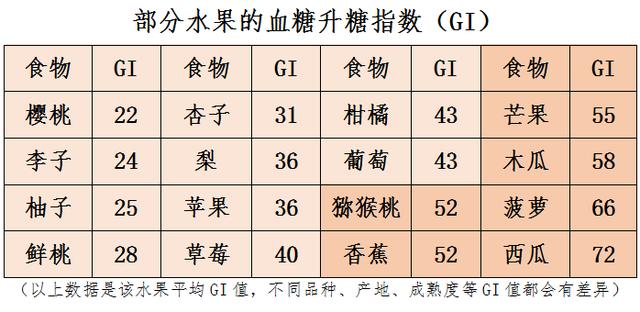
Some people will ask, you do not say that diabetics should choose low GI fruit? Papaya GI value in the fruit is not low ah, high blood sugar can still eat? So, is not the GI relatively high fruit, diabetic patients absolutely can not eat, and GI low can not be restricted? The fact is not so, postprandial blood glucose level in addition to the glycemic index is related to the high and low, but also with the total amount of carbohydrates contained in the food has a close relationship. That is to say fruits with high GI, if the sugar content is less, despite its easy conversion into blood sugar, but the impact on the overall level of blood glucose is not great. This means that diabetic patients should not only consider the GI when choosing fruits, but also the glycemic load, or GL, which reflects the effect of the amount of carbohydrates on blood glucose. (GL <10为低GL食物,GL>20 for high GL foods.GL = GI x amount of actual available carbohydrate from intake of the food/100 )
Take papaya: the GI value of papaya is 58, belonging to the middle GI food, but the sugar content of papaya is not high, every 100 grams of papaya contains about 7.2 grams of sugar, it's GL in 4 or so, so the daily consumption will not cause substantial changes in blood sugar.
One more thing to remind friends about sugar content is that they should not equate sweetness with sugar. Many people have the misconception that fruits that taste sweet must be high in sugar. In fact, our sense of taste is sometimes not so precise, just by mouth tasting is not very reliable. Because, the sugar you eat, is not the same!
The sugar in fruits is converted from starch when the fruit ripens. Sugar provides sweetness, but the sweetness does not depend only on the sugar content, but also on the type of sugar. Fruits contain three main types of sugar: glucose, fructose and sucrose, and the sweetness of these three types of sugar varies greatly. In comparison, fructose is the sweetest (equivalent to 1.7 times sucrose), followed by sucrose, and lastly glucose (equivalent to 0.7 times sucrose), so generally speaking, the higher the content of fructose, the sweeter the fruit will be to eat. But in terms of GI, glucose is the highest (100), sucrose is the second highest (65) and fructose is very low (23). See if the sugar content of these fruits surprises you? Sweet watermelon contains 5.8% sugar; not particularly sweet dragon fruit contains 13.3% sugar; sour hawthorn contains 22% sugar!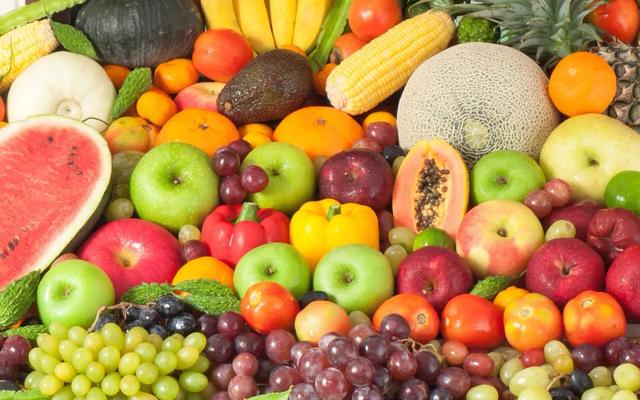
Diabetic patients should not give up eating fruits because they contain sugar. China's Diabetes Dietary Guidelines for China (2017 edition), which was launched this year, also suggests that eating more vegetables and fruits in moderation, with a variety of types and colors, supports diabetic patients to eat fruits in moderation. Current research has proved that moderate fruit intake can reduce the risk of diabetics suffering from various diabetic complications
When choosing fruits for diabetics, it is important to choose both low GI and low sugar fruits. The sugar content of different fruits varies greatly. Most low GI fruits such as apples, pears, peaches, apricots, plums, cherries, grapes, mandarin oranges and grapefruit do not have a high sugar content of about 10 percent, and can be consumed by diabetic patients on a regular basis, at a rate of about 200g per day. Among the higher GI fruits, pineapple, watermelon, papaya, mango, kiwi are also low in sugar content, between 5.8 and 10.3, diabetic patients can consume about 100g per day. And higher GI, and a lot of sugar content like fresh dates, bananas, plantains, etc. is best not to eat. Like raisins, dried jujubes, dried cinnamon, etc. are high in sugar content. Although some GI values are less clear and less suitable for diabetics. A 200g serving of edible fruit is about the size of two kiwis, a medium sized apple or peach.
Fruit can be used as an addition between meals or as a 'cooler' at mealtimes.
For example, eat about 100 grams at a time, twice a day. This is roughly equivalent to eating half an apple for lunch and a small box of blueberries for dinner. Don't forget, if you eat fruit, you'll have to eat a little less of your main meal. Enjoy your fruit!
I am a nutritionally savvy internist and a former dietitian for Air Force pilots. For more sharing, stay tuned. Thanks!
[2017.11.02 Answer: Liu Xiaohui Word count: 848]
People with high blood sugar can also eat papaya, but not too much and preferably not alone. It is better to eat it with other foods that have a lower glycemic index.
Papaya belongs to the low-calorie medium GI (glycemic index) food, its vitamin A (145ugRE/100g), carotene (870ug/100g) and vitamin C (43mg/100g ) are high . Therefore, for those who are heavier and have high blood sugar, eating papaya in moderation is also a good choice. Moreover, in this autumn, the weather is relatively dry season, from time to time to eat some papaya can moisturize the skin, lubricate the intestinal tract. But don't expect papaya breast enhancement (haha! Papaya breast enhancement is a rumor!)
In order to reduce the burden of papaya on the increase in blood sugar, papaya and low glycemic index of consumption with food is better. Such as the consumption of papaya milk is good, papaya fungus soup, papaya pudding, papaya yogurt papaya milk tea is also good, that is to say, you can cleverly use the sweetness of the papaya, to papaya instead of sugar to eat. But if the above methods of consumption and then add sugar, add honey, add red dates, add refined white rice (papaya porridge), noodles (papaya pastry), etc. is not suitable for high blood sugar to food.The former through the low GI food to neutralize, can make the meal of papaya food glycemic index lower, while the latter will be the whole meal of papaya food glycemic index will continue to rise, not only that, the energy will also be greatly increased, but also is not conducive to high blood glucose people to control weight. (Weight is also a big burden for people with high blood sugar)
In addition, among the above papaya foods that are suitable foods for people with high blood sugarPapaya is best eaten whole and fastThe papaya juice should not be added to the juice, papaya juice production process will damage the vitamin C in the papaya to reduce the nutritional value of the papaya, at the same time, the more delicate food, the better the gastrointestinal digestion, the higher its glycemic index.
[Selection of papaya] Papaya is divided into male and female, female papaya is delicious, while male papaya is not delicious. The female papaya is short and thick, long more uniform solid. In addition to the shape, the color is yellowish, feel slightly soft papaya is sweeter. As shown in the picture below:
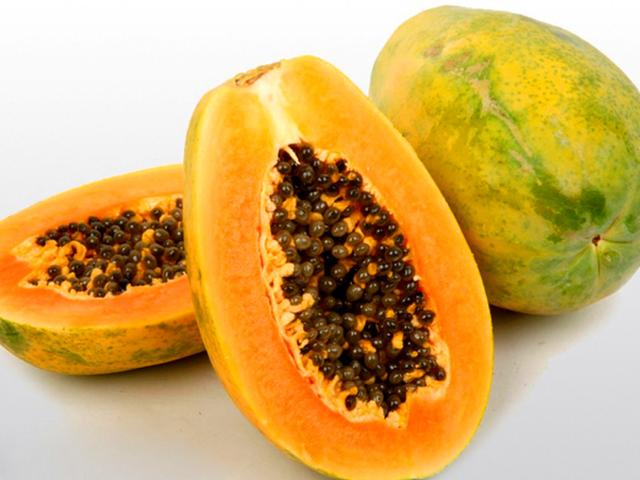 [The wonderful use of papaya seeds]:
[The wonderful use of papaya seeds]:
Papaya seeds contain papaya enzymes will soften fresh meat.
Normally, when you make beef, it is not easy to cook, and the meat can be tough if you don't cook it properly. Marinate the beef in papaya seeds beforehand and its results will be drastically improved. The specific method is:
Spread the beef knuckle slices flat and then marinate them with a layer of papaya seeds on top. Allow the papaya seeds to fully flavor into the beef. This way the natural papaya enzymes in the papaya seeds will work to soften the beef. Once the marinade is done, remove the beef and gently remove the papaya seeds from the top. Remember not to wash the beef again! Because the seeds are clean, uncontaminated, and slightly sweet, you are ready to use the beef in a delicious dish. You can use the marinated beef to make a sauce, or you can use it as a filling for beef meatballs. Always, you can use your imagination and play as much as you want.
Vice Captain ~ Liu Xiaohui (National Public Nutritionist Grade II, Lecturer, Dalian Nutritionist Club Training Department, Director of Wang Xingguo Nutritionist Special Training Class IV, Original Creator of Popular Nutrition)
Can you eat papaya with high blood sugar? How high does your blood sugar have to be?
According to the 2013 edition of the Chinese Diabetes Prevention and Control Guidelines. In the case of stable blood glucose control, fasting blood glucose control ≦ 7mmol / L, postprandial blood glucose ≦ 10mmol / L. You can eat fruit between meals, papaya is also one of the fruits.
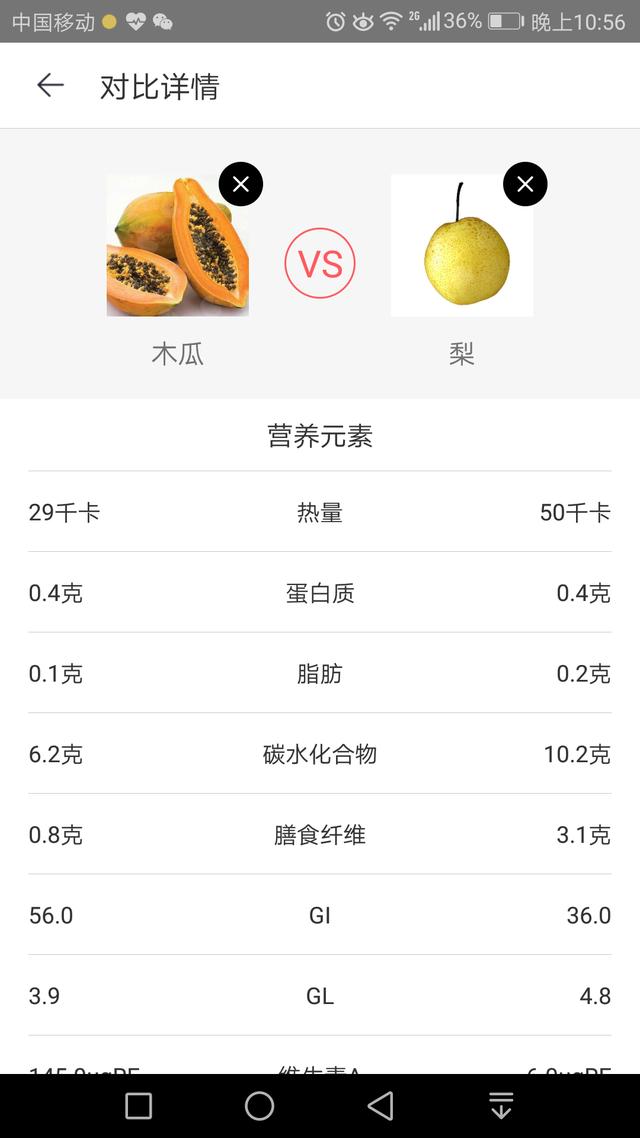
Above is a chart comparing the nutrients in papaya and pear.
As you can see in the picture ~ papaya, which has fewer calories than pear.
If you look at its glycemic index GI is 56. Take another look at his glycemic load GL is only 3.9.
For choices with diabetic diets, it is important to look not only at its glycemic index GI but also its glycemic load GL. Lower choices will be better.
What is the glycemic index? The glycemic index is the ratio of the area under the time curve of the rise in sugar caused by a standard substance (glucose) to the area under the time curve of the rise in blood sugar caused by a standard substance (glucose) times 100. It is the ratio of the area under the time curve of blood glucose produced by the rise of sugar and the area under the time curve of blood glucose produced by the standard substance (glucose) multiplied by 100, which reacts to a certain kind of food, the relative speed and ability of glucose to raise blood glucose. It is an indicator of the degree of increase in blood glucose caused by food, and is the response status of the body's blood glucose production after eating.
There is also the term glycemic load (GL). gL = GI x carbohydrate matter content in grams/100.
GL > 20 is a high glycemic load food
GL between 10 and 20 for foods with a moderate glycemic load.
Foods with GL < 10 are low GL foods.
As you can see, papaya can be eaten in relatively large quantities.
But even the fruit that can be eaten more should not be overdone, and the fruit is controlled at 200 grams per day. Equivalent to the size of a tennis ball, that is to say, papaya eat half on it.
One more thing to focus on, don't eat fruits including papaya immediately after a meal or eat fruits first before a meal, this will greatly increase the burden of insulin and cause blood sugar to rise.
Afterward, I recommend a treat for you ~ Papaya Yogurt. You can add papaya to unsweetened yogurt for a better taste.
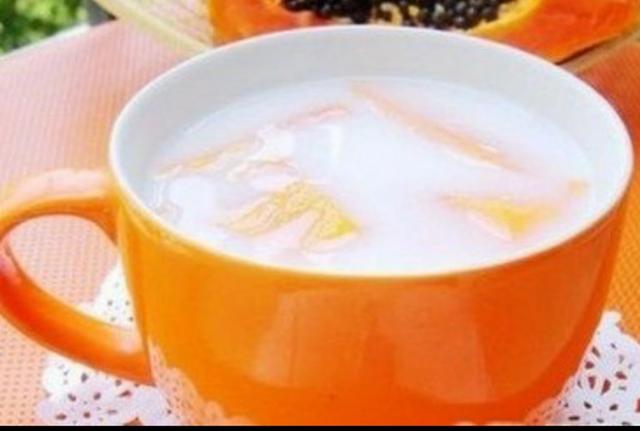
First we need to be clear about what people with high blood sugar should not eat.
1, avoid prompting the rapid rise in blood sugar levels of food
Consumption of table sugar (white sugar, brown sugar, dextrose, maltose, fructose, milk sugar, chocolate), sugar products (candied fruits, canned fruits, all kinds of sugary beverages, sugary pastries, jams), etc., will lead to a rapid rise in blood glucose levels, which will have a direct impact on the progression of the diabetes condition and interfere with the effective treatment of diabetes.
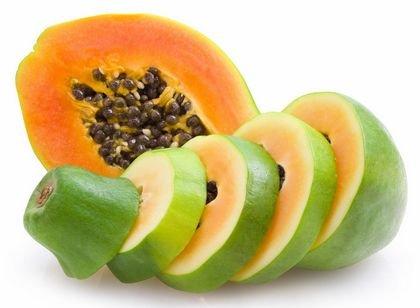
2. Limit lipids
Lipid metabolism is disturbed in diabetic patients, resulting in hypercholesterolemia and hyperlipoproteinemia in severe cases. Atherosclerosis and cardiovascular disease are the main comorbidities of diabetes mellitus, thus it is necessary to limit the intake of excessive lipids and high cholesterol substances, such as various types of animal fats, animal offal, egg yolk, fish roe, shrimp and crab roe, and so on.
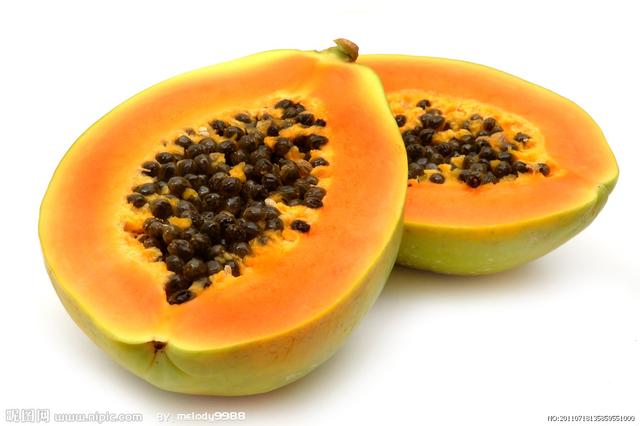
3. Avoid blind intake of protein substances
For diabetic patients, protein intake is not more good. Excessive protein intake will increase the burden on the kidneys, which can easily lead to diabetic nephropathy, and daily protein intake of diabetic patients is limited to 1 gram per dry gram of body weight.
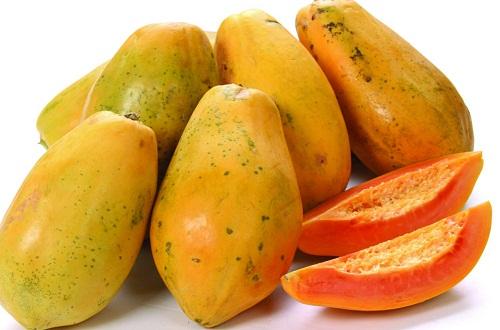
Secondly, we need to find out if papaya contains any ingredients that diabetics should not eat.
Papaya has the effect of strengthening the spleen and eliminating food. Papain in papaya can break down fat into fatty acids. Papaya contains an enzyme that can digest proteins, which is conducive to the body's digestion and absorption of food, so it has the effect of strengthening the spleen and eliminating food. Its unique papaverine has anti-tumor effects, and can prevent the synthesis of human carcinogen amine nitrite, lymphatic leukemia cells have strong anti-cancer activity. Papaya contains oleanolic acid component is a kind of compounds with hepatoprotective and enzyme-lowering, anti-inflammatory and inhibitory, lowering blood lipids, softening blood vessels and other efficacy.
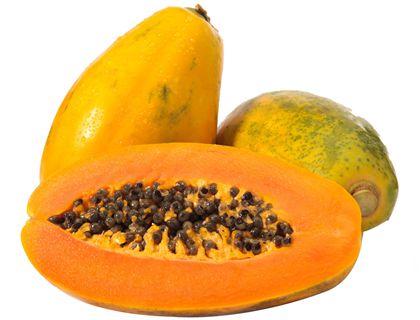
Papaya which includes a variety of vitamins. In particular, the content of vitamin C is particularly high, five times more than watermelon and bananas, vitamin C can play a role in preventing colds, so eat more papaya can effectively prevent colds.

It seems that people with high blood sugar can eat papaya, but papaya should never be eaten more. In addition, patients with high blood sugar can not eat icing sugar papaya.
This question and answer are from the site users, does not represent the position of the site, such as infringement, please contact the administrator to delete.